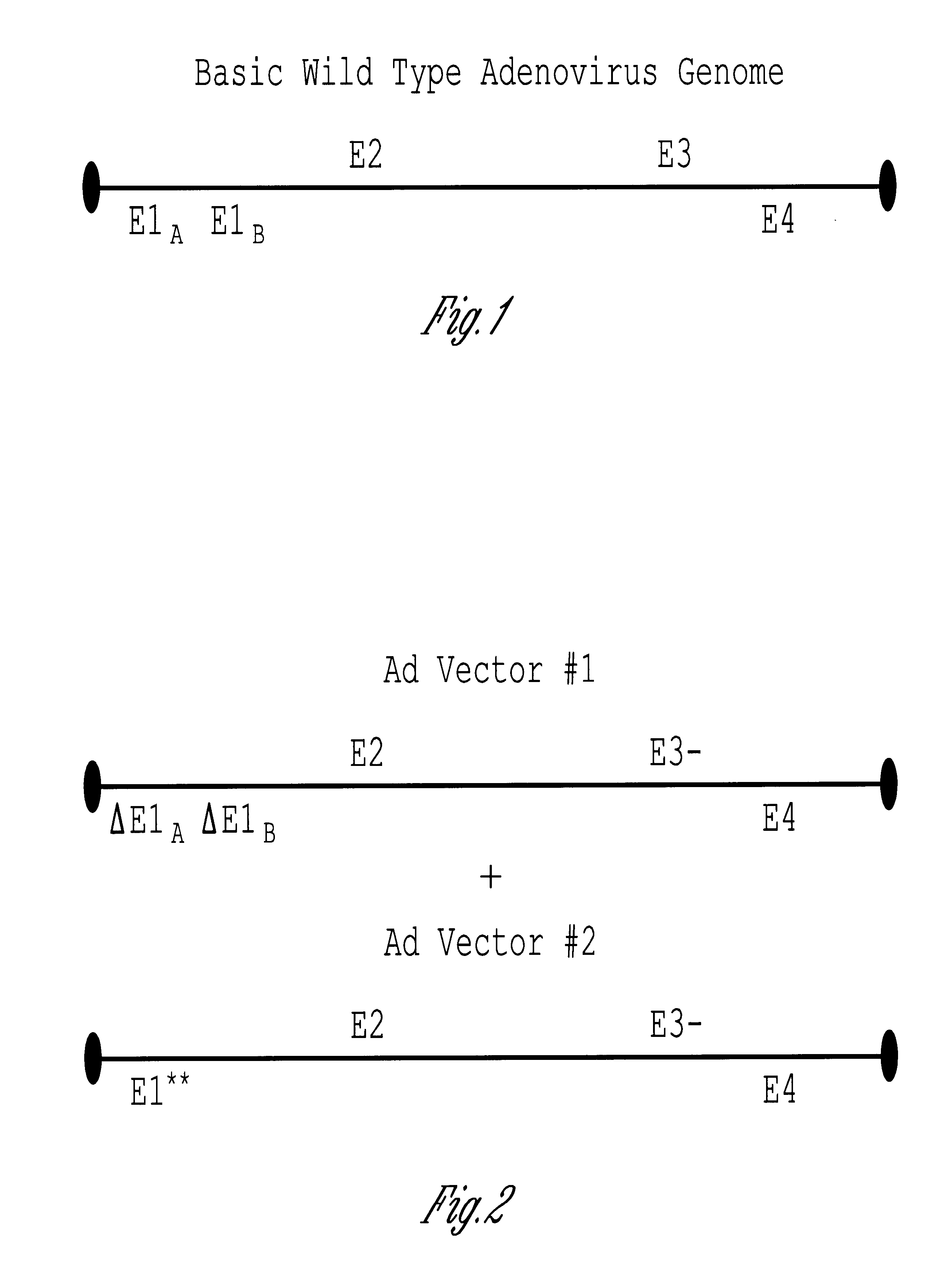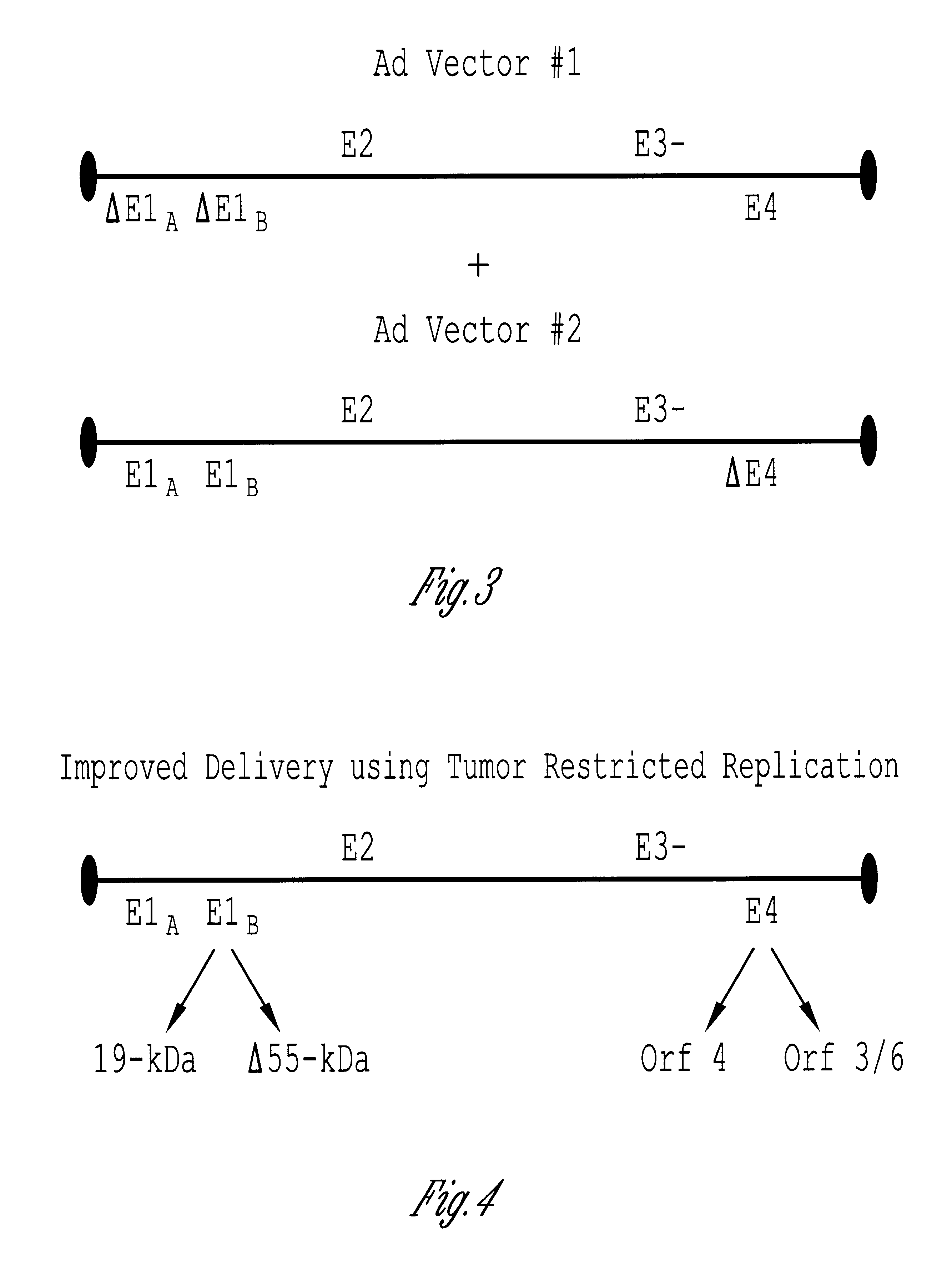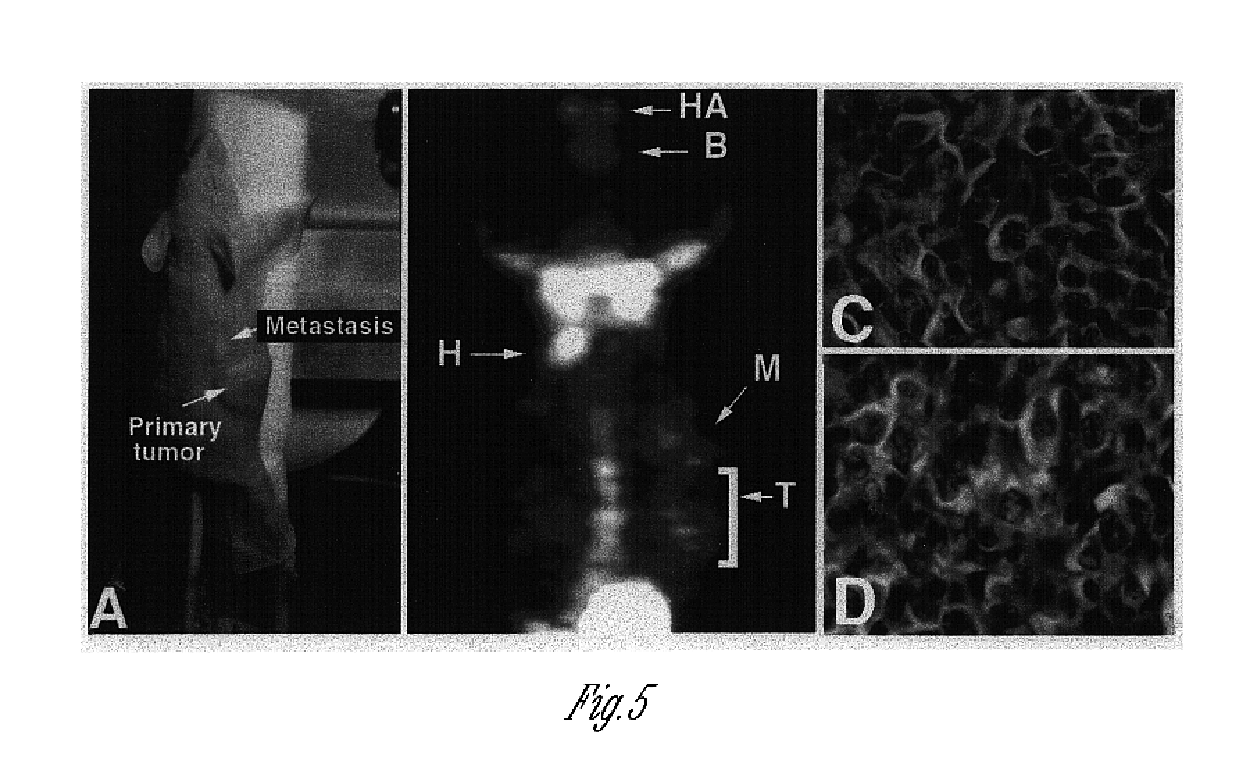Methods and compositions for efficient gene transfer using transcomplementary vectors
a technology of complementary vectors and gene transfer methods, applied in the field of methods, can solve the problems of inherently limited dna-mediated gene transfer, difficult dna-mediated gene transfer,
- Summary
- Abstract
- Description
- Claims
- Application Information
AI Technical Summary
Benefits of technology
Problems solved by technology
Method used
Image
Examples
example 1
[0090]Low efficiencies of gene transfer with current viral vectors are recurrent problems for gene therapy. The most commonly used viral vectors are based on retroviruses but adenoviral vectors are seeing increased usage because of their higher efficiency of gene delivery in vivo. Despite their relative high efficiency compared to other vectors, a single direct injection of an adenoviral vector into solid tumor routinely results in less than 10% transduction of the tumor. We demonstrate in this study the use of two replication defective adenovirus vectors that cotranscomplement each other and thus allow viral replication, which enhanced both gene delivery and gene expression in the prostate tumor cell line DU 145. Specifically we used equal concentrations of an E1˜E3˜ deleted adenovirus containing a green fluorescent protein (GFP) reporter gene (Ad GFP) with an E4 deleted adenovirus Ad dl 1011. In vitro transduction of 2×105 cells DU 145 cells with Ad GFP at a multiplicity of infect...
example 2
[0092]Adrenocortical carcinomas are severe malignancies. The prognosis is poor as metastases in lung and liver soon develop, and 5-year survival rates range between 15 and 35% (Harrison et al., 1999). Two age peaks of higher incidence, in the 1st and 4th decades of life, have been reported (Mayer et al., 1997; Teinturier et al., 1999). Molecular, paracrine, immunologic and hormonal features of these tumors have been studied extensively and prognostic signs have been developed (Bornstein et al., 1999). Impaired cellular communication between tumor and effector cells of the immune system due to decreased MHC3 class II expression (Marx et al., 1996) may be related to failed immune surveillance. Interestingly, soluble mediators of the immune system itself have been shown to promote adrenocortical tumors by the action of aberrantly expressed receptors (Willenberg et al., 1998). However, despite efforts to shed light upon the molecular and immunologic mechanisms leading to neoplastic dege...
example 3
[0196]The method of the invention is shown with various combinations of vectors. dl1011 is a E4 mutant with a deletion of the entire E4 region. 1014 is a mutant with open reading frame 4 expressed.
[0197]FIG. 11 are photographs depicting DU 145 spheroids transduce with Ad GFP+Ad Null or Ad GFP+Ad dl1011 and subjected to confocal microscopy. As can be seen the combination of AdGFP and AD DL 1011 showed marked increase in GFP expression levels over the individual vectors.
[0198]FIG. 12 shows DU 145 cells transduced with various ratios of Ad GFP+Ad Null or Ad GFP+Ad dl1011 and photographed at 20 hrs. The combination of Ad GFP and Ad dl1011 gave similar GFP levels with up to 1 log lower vector dose.
[0199]FIGS. 13a-c depict mice with HCT 115 tumors injected. 1×108 PFU with Ad GFP+Ad Null or Ad GFP+Ad dl1011 or Ad GFP+Ad dl1010 or Ad GFP+Ad dl1014 or Ad GFP+Ad dl1020 and tumors photographed at the indicated times. The replication competent vectors demonstrated up to 60% tumor regression.
[02...
PUM
| Property | Measurement | Unit |
|---|---|---|
| Gene expression profile | aaaaa | aaaaa |
| Fluorescence | aaaaa | aaaaa |
Abstract
Description
Claims
Application Information
 Login to View More
Login to View More - R&D
- Intellectual Property
- Life Sciences
- Materials
- Tech Scout
- Unparalleled Data Quality
- Higher Quality Content
- 60% Fewer Hallucinations
Browse by: Latest US Patents, China's latest patents, Technical Efficacy Thesaurus, Application Domain, Technology Topic, Popular Technical Reports.
© 2025 PatSnap. All rights reserved.Legal|Privacy policy|Modern Slavery Act Transparency Statement|Sitemap|About US| Contact US: help@patsnap.com



